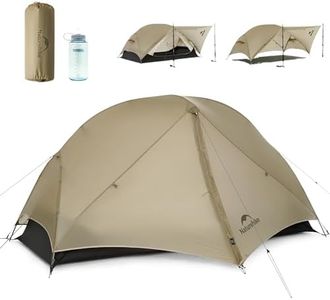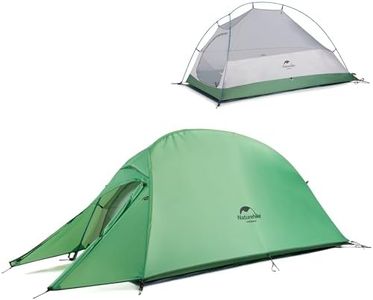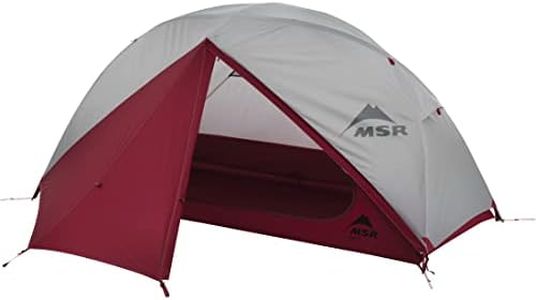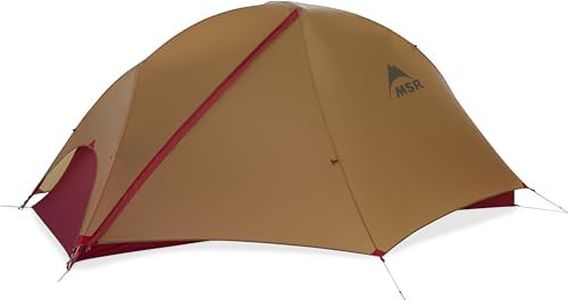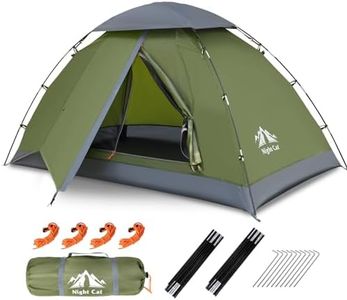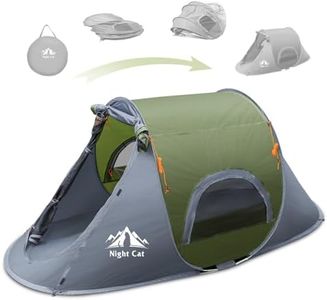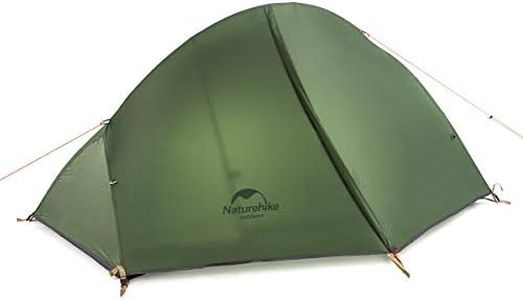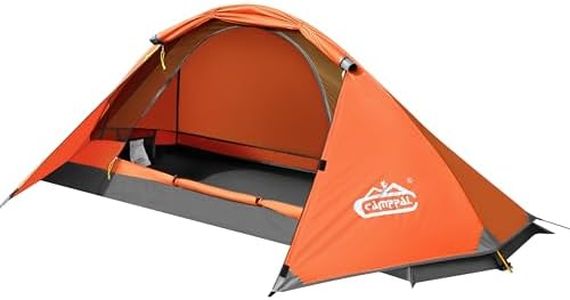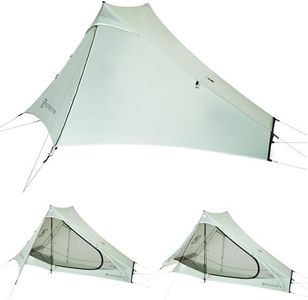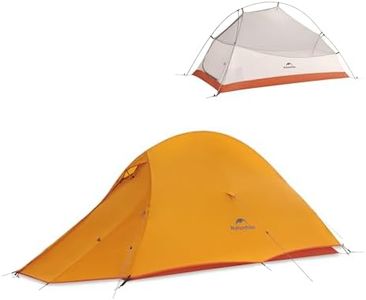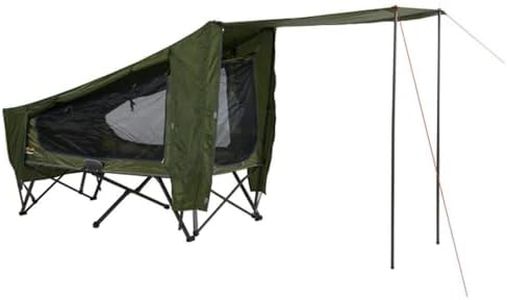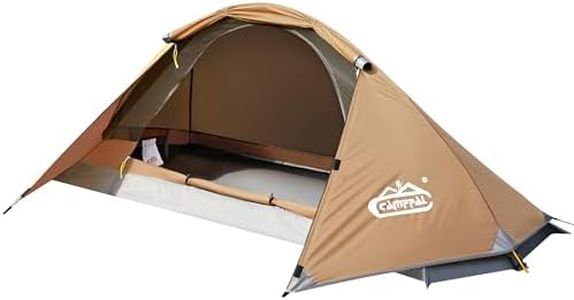We Use CookiesWe use cookies to enhance the security, performance,
functionality and for analytical and promotional activities. By continuing to browse this site you
are agreeing to our privacy policy
10 Best Lightweight 1 Person Tent
From leading brands and best sellers available on the web.Buying Guide for the Best Lightweight 1 Person Tent
Choosing a lightweight 1-person tent is all about finding the balance between weight, comfort, durability, and ease of use. These tents are ideal for solo hikers and backpackers who value the freedom of traveling without extra bulk. It's important to assess where and when you'll use the tent, as different designs offer various advantages in terms of weather protection, ventilation, and interior space. Your personal needs—whether you prioritize a super-light setup or more living comfort—will help guide you towards the best choice.WeightWeight refers to how heavy the tent is when packed up and ready to carry. This spec is crucial for backpackers or solo adventurers who need to minimize the load. Tents in this category usually range from ultralight (under 2 pounds), lightweight (2-3 pounds), to standard solo tents (over 3 pounds). The lighter the tent, usually, the less comfort and features it offers. If you plan to carry your tent for long distances, opt for something in the ultralight or lightweight category. For shorter trips or if comfort matters more, a slightly heavier tent may be acceptable.
Packed SizePacked size indicates how small the tent bundles up when it's not in use. This is important because a smaller pack size means it will take up less space in your backpack, leaving more room for other essentials. Tents generally range from very compact (like the size of a water bottle) to bulkier packages (the size of a large loaf of bread). If you have a smaller pack or need every inch of space, look for the most compact option. If space isn't as tight, you can choose a roomier model.
Season RatingSeason rating refers to the type of weather and conditions the tent is designed to handle. Most 1-person lightweight tents are 3-season, meaning they're suitable for spring, summer, and fall. These provide a balance of ventilation, rain protection, and moderate warmth. There are also 4-season tents, built for tougher, wintery conditions, often heavier and sturdier. If you camp mainly in mild weather, a 3-season tent will be lighter and more comfortable. For winter or alpine trips, choose a 4-season version.
Floor Space and VestibuleFloor space tells you how much room you'll have inside the tent, both for sleeping and for keeping your gear inside or just outside under a sheltered space called a vestibule. More floor space means more comfort, but also usually more weight. Vestibules are handy for stashing a backpack or muddy boots. If you prefer more room to move around or need extra space for gear, look for a tent with a larger floor area and vestibule. If you want to go ultralight and don't mind tight quarters, you can pick a smaller tent.
Setup TypeSetup type describes how you pitch the tent—whether it uses traditional poles, trekking poles, or is semi-freestanding. Traditional pole tents are often quick to set up, while trekking pole tents save weight by utilizing gear you may already have. Freestanding tents don't require staking, making them easier to position anywhere, but they usually weigh a bit more. If you value fast, stress-free pitching on tricky ground, freestanding or semi-freestanding might suit you. If saving every ounce matters, consider a trekking pole-supported tent.
VentilationVentilation refers to how well the tent manages airflow to reduce condensation and keep you comfortable. Tents with large mesh panels or vents offer better airflow, which is great in warm or humid environments. Tighter tents offer more warmth but can get stuffy. If you camp in hot or damp areas, good ventilation will keep things dry and comfortable. For cold, dry places, you can trade some mesh for warmth.
WaterproofnessWaterproofness measures how well the tent can keep out rain, usually rated by the thickness of waterproof coatings on the fabric. Higher ratings mean better rain protection but can also add weight. Look for solid waterproofing if you expect lots of wet weather. For mostly dry climates, an average rating is usually fine and keeps the tent light.
DurabilityDurability relates to the materials used in the tent, like the floor and fly fabrics, as well as poles. More durable tents use heavier, stronger fabrics and poles but can be heavier. Ultralight tents might use thinner materials that require more care. If you’re rough on gear or camp on rocky ground, go for a more durable option. If you travel lightly and handle your equipment gently, a lighter, less rugged tent is suitable.
